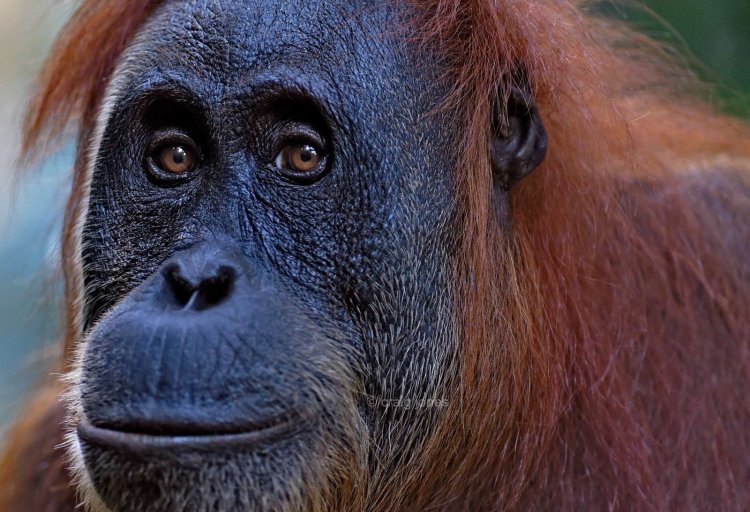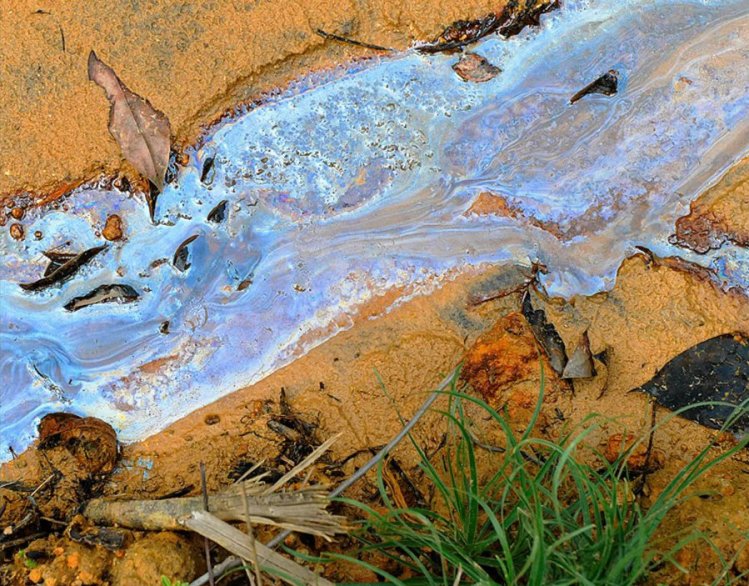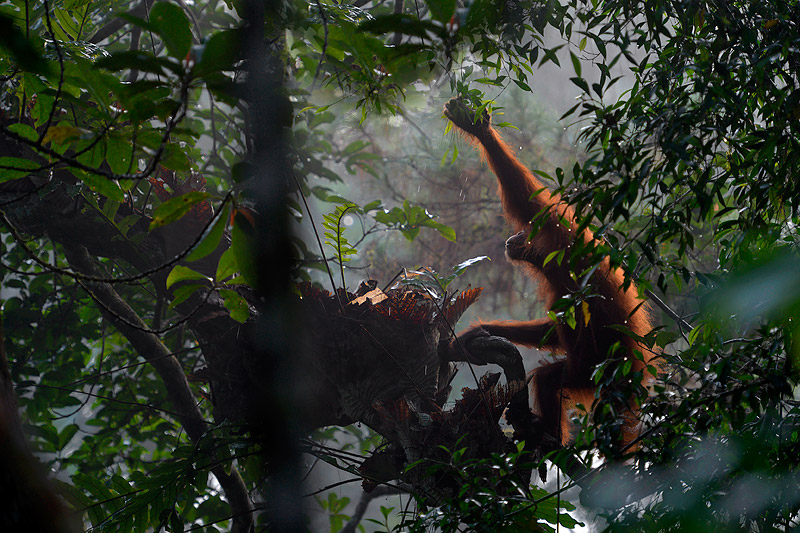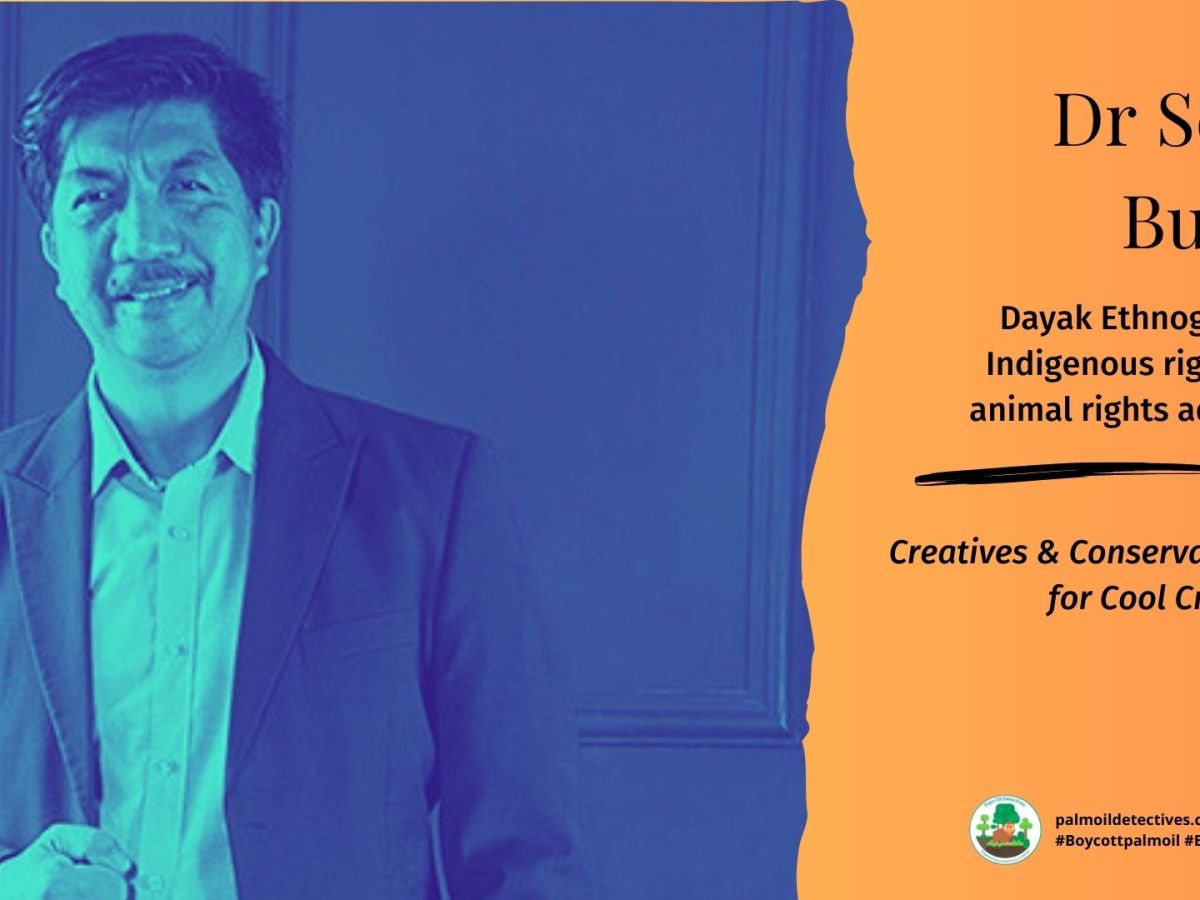Orangutan with the golden hair: A short story by @setiabudhi18 about #palmoil plantations, how pesticides seep into the groundwater killing people and animals @global_witness @GreenpeaceUK @EIA_news #Boycottpalmoil #Boycott4Wildlife
Tweet
He’s a golden haired orangutan, at least that’s what the villagers called him….

He is a male of the species of Pongo pygmaeus. This orangutan appears all the time on the slopes of the Müller Mountains, located 10,000 meters from the Mantikip Dayak village in the lush green heart of Borneo.
News spreads rapidly throughout the village of the presence of this magnificent creature with the golden hair.
As a result, leaves and branches of the tree glisten with golden flashes of light. Not only that, plants such as Meranti trees, Balau Wood, Keruing and weeds catch the hairs and become woven in golden threads.

From his explorations of the jungle, the orangutan’s golden hair sticks to trees, leaves and tree branches




Large and small birds alight from branches drag along the orangutan’s golden hairs. Birds, flying low in the late afternoon flap their wings and the golden hairs drop gently into the river, turning this gold as well.
A little boy bathing in the river emerges with his body covered in golden threads. The village of Mantikip is cloaked in gold.

Golden threads of hair pile up in aquatic plants and drift along the rushing water of the river turning it gold. The orangutan with the golden hair shows himself in the forest, in the Kumpai plants, the gardens, river and the village.
[Illustration: Mienar]
Do you know the reason why the orangutan has golden hair? It is from the poisonous liquid that’s stuck to his body. This comes from palm oil mill run-off and waste on the south side of the Müller Mountains – this is the root cause.

One day, indigenous people enter the grounds of the oil palm plantation to look for food. Word-of-mouth rapidly spreads throughout their community and soon many people enter the area looking for food. The entire population is afflicted by itching, rashes and fever. Some residents are so thirsty and desperate for water that they take water from the flowing river. They are later found dead in their homes.

A week later, word of the orangutan with the golden fur and the possible presence of toxic liquid from the factory’s waste reaches the ears of Freddy Kumbayang, director of the local palm oil mill.
He orders his staff to immediately leave the forest. He does not believe that waste leaking from his palm oil mill is the real reason for the poisoning of the local water supply.
In front of a small gathering of his staff and the local villagers, Kumbayang holds court and starts to speak.
“There must be something wrong,” he says angrily, “Our company is very clean and ethical, we would not be stupid like this. We have a zero tolerance policy on pollution! Disposing of waste into the forest means that we kill ourselves.”

“We work according to the standards of the world’s palm oil companies,” he adds loudly. “We are members of the RSPO. We are not to blame here!”
“Only uneducated and stupid people would say that toxic waste comes from our factory! We know that the natives in this area are easily swayed by the provocations of the townspeople.”
That same afternoon, Freddy Kumbayang and a few members of his staff go together into the mountains and forest to investigate the allegations in person.
Freddy Kumbayang and his team move along the slopes of the Müller Mountains. He orders his staff to fetch water flowing down the hillside. “Take some water samples here for lab analysis”, he says.

Later as darkness falls, the small group descend into the forest.
When they arrive at a small bridge over the river, they see golden threads dancing in the wind, twinkling on the surface of the leaves, caught at the river’s edge.

The golden-haired orangutan stares at the humans curiously from deep within the shadows. He waggles his hands and feet to shed his fur. Everything in the forest has turned golden in the evening light.
“For sure, this only happens on the surface of the leaves and twigs, so these trees are safe,” Kumbayang says.
“Let’s check in the forest” he says “Quickly! before the pollution report is caught on camera by journalists!” he orders his staff to walk into the deep darkness of the forest.
“Keep moving!” he barks. So they march deep into the west Kalimantan wilderness.
No one knows what became of the palm oil company group or what they discovered in the jungle. Perhaps they found hornbills, bats or found the orangutan with the golden hair?
A week after the incident, the SAR team find decomposing human bodies on the rocky slopes of the Müller Mountains. It’s the bodies of Freddy Kumbayang and his staff.

The Mantikip village, which originally numbered 125 people is whittled down to only seven people still alive.

One family never went into the forest and never touched the river water. Miraculously, they had an old well beside their home. The toxic liquid from the palm oil factory that destroyed the river and turned the orangutan’s hair golden did not seep into their water supply – they were the only people to survive.
An environmental report issued later showed that the orangutan’s fur was contaminated with palm oil mill waste.




The world looks on and sees with open eyes the horrendous cost to animals and indigenous people of this corrupt industry. The world condemns oil palm plantations to this day.
Written in Bakumpai Village Saturday 3 October 2021 by Dr Setia Budhi
Images/Art: Pixabay, Craig Jones Wildlife Photography, PxFuel, Mienar
Dedication: “In this forest valley, for you A…with love”
Dr Setia Budhi
This is a fictional story that mimics real life…
A 2021 report by Global Witness revealed workers on a palm oil plantation in Papua New Guinea died as a result of consuming contaminated water.
These palm oil plantations supply so-called ‘sustainable’ brands that use RSPO certified ‘sustainable’ palm oil, supposedly free of human rights abuses and destruction, but this is not the case. Here are the brands: Kelloggs, Hersheys, Nestle, Danone, PZ Cussons, AAK, Colgate-Palmolive, General Mills.
We reject the corruption and greenwashing of so-called ‘sustainable’ palm oil. We #Boycottpalmoil #Boycott4Wildlife

“I’ve been doing ethnographic field research since early 2013, by visiting several villages of the Dayak Siang, Dayak Bakumpai and Dayak Oot Danum tribes. My field research is related to the Dayak peoples. How the exploitation of natural resources, modernisation and the depleted forests affects their ability to find food.”
— Dr Setia Budhi, Dayak Ethnographer, Academic, Writer, Conservationist, Indigenous Activist, Borneo
Dayak Indigenous Ethnographer Dr Setia Budhi: In His Own Words
Dr Setia Budhi is a senior lecturer in Anthropology and Sociology at Universitas Lambung Mangkurat. He is an indigenous advocate, forest conservationist and a research specialist in Dayak ethnography in South, Central and East Kalimantan. He completed his PhD in 2010 at UKM Malaysia under the supervision of Prof. Awang Hasmadi Awang Moeis and Prof.…
Keep reading






Reblogged this on The Free.
LikeLiked by 1 person